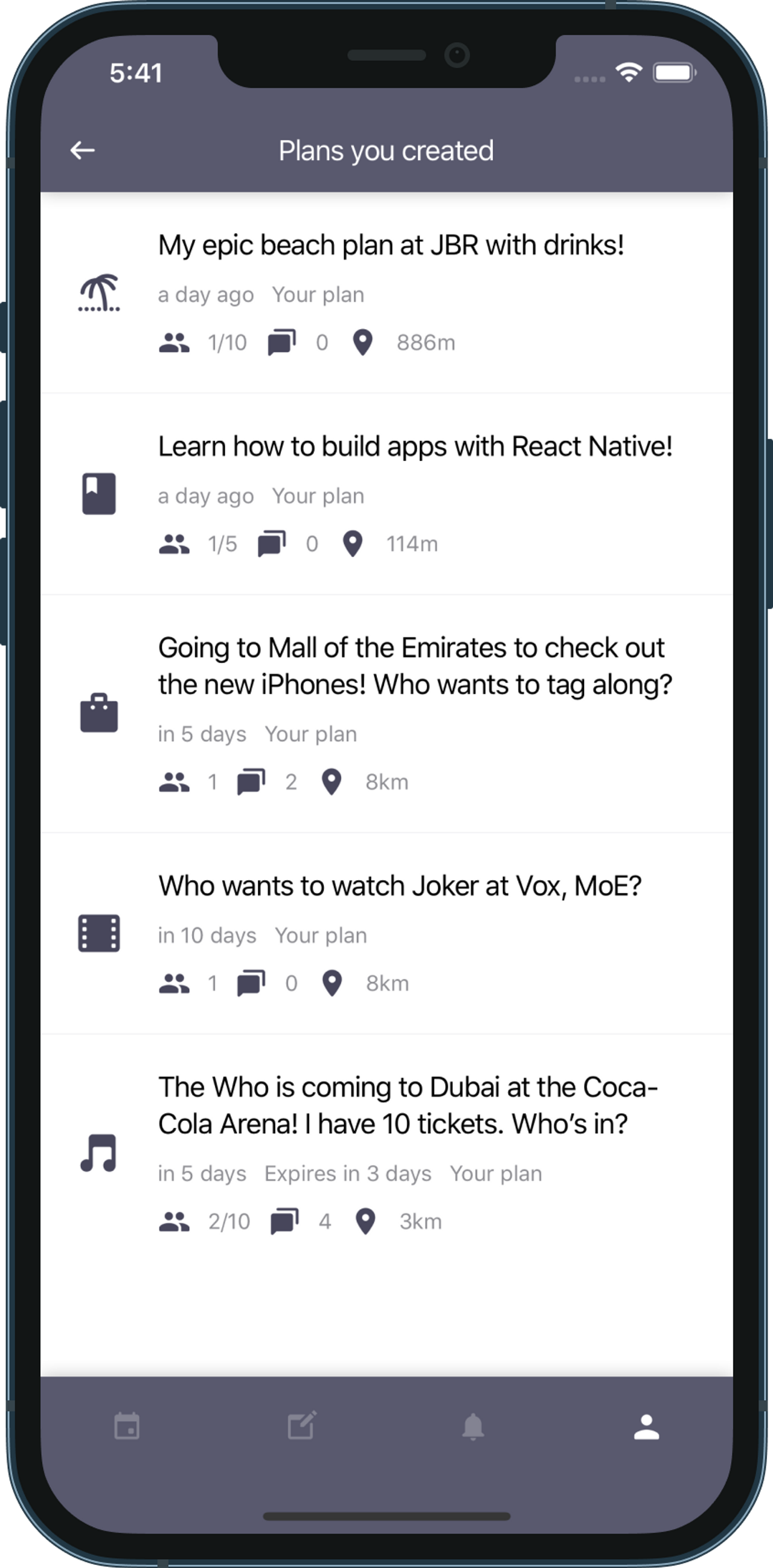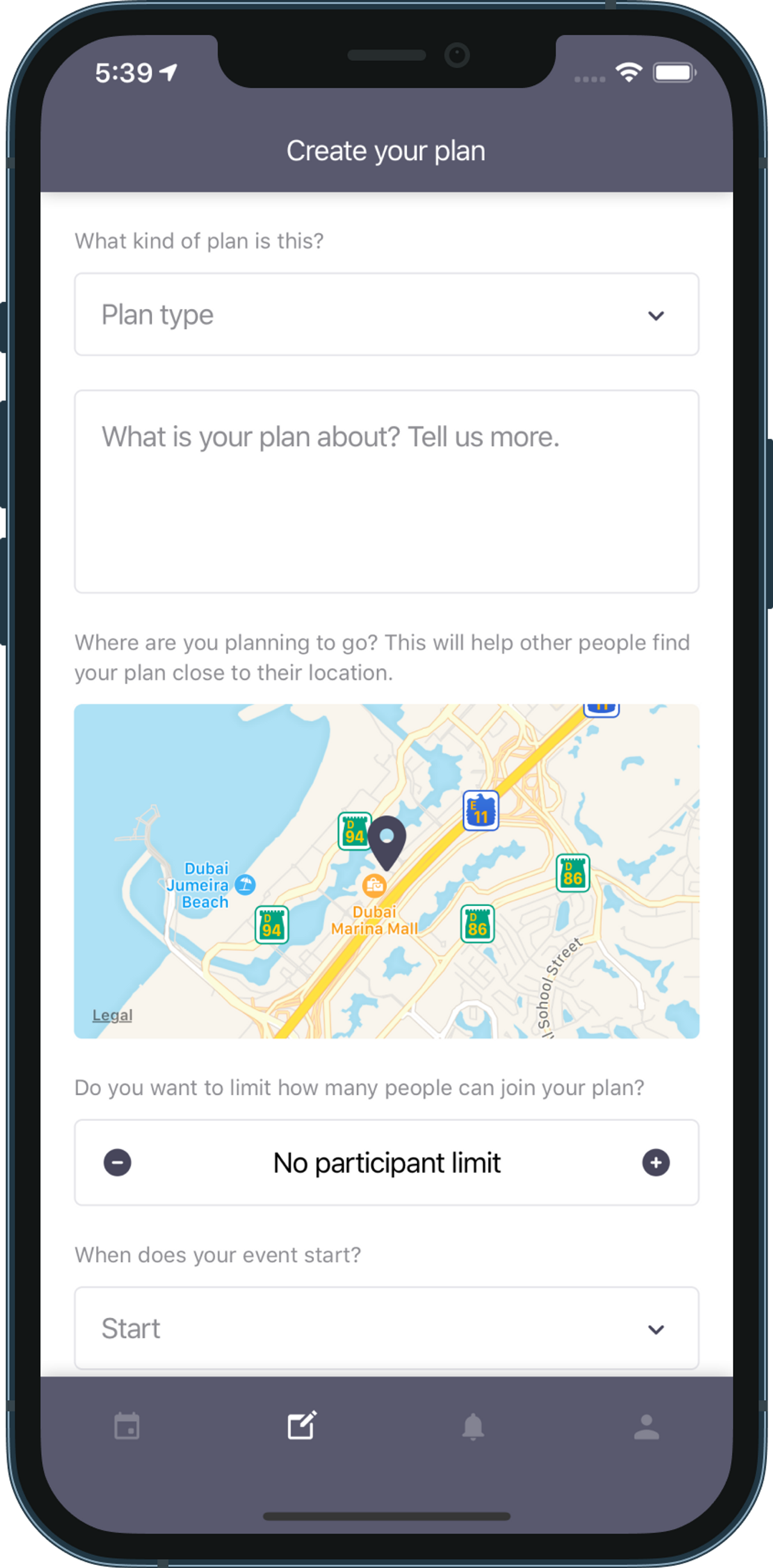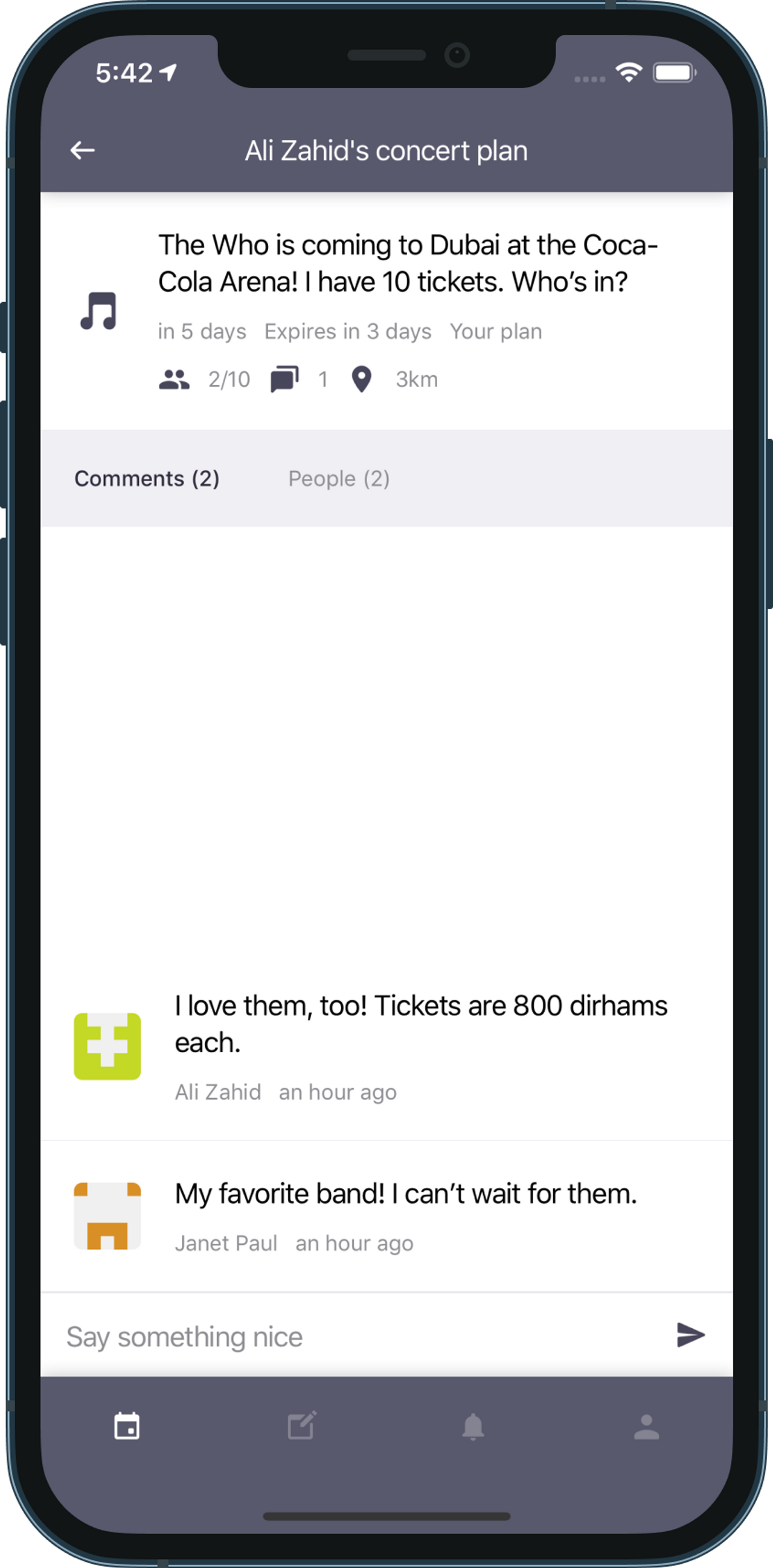PlanBear

The very distant past
I moved to Dubai in the fall of 2013. I was 22 at the time, and all my colleagues were 30+ and married with families. It became clear that I'd have to look elsewhere to make new friends.
It turns out Dubai is a very lonely place. Most people are here temporarily, on their way to the next destination. So relationships don't last very long either.
In 2014, I participated in a hackathon hosted at the Microsoft offices in Dubai Internet City. By that time, I had thought about building PlanBear, but hadn't gotten around to it. So the hackathon was the perfect opportunity to dive into it.
I met a student from NYU Abu Dhabi, Asyrique, at the hackathon, and we got to work on the app. I have no talent for logo design, but I designed one anyway.

We both worked back and forth on the backend and mobile app. The backend was Node with Express, and the app was Ember with Cordova. Meteor was the hot new thing at the time, and my partner started experimenting while I built a functional prototype.
The premise was simple. You choose a type and create a plan. For example, for a movie, for the beach, etc. Then, people nearby would request to join your plan. Tada.
We bombed at the hackathon, though. One of the judges mentioned us at the award ceremony saying why people would use PlanBear when they have Meetup. More on this later.
Over the next couple of months, I refined the idea and designed a new logo. I'm really proud of this piece of art.

We went to another hackathon next year and improved the app. We got a bigger team this time; Asyrique brought some of his friends from school to help with marketing. We added new features and fixed some old bugs.
Of course, we bombed again. Nobody was interested in social apps. The winner was a workplace and meetings tool and the runner-up a healthcare app. I can't compete with those.
The distant past
Following that, I put the app on pause. I forgot all about it until a year later, the judge who trashed the app at the first hackathon reached out to me about buying the app. What a turn of events.
He had an investor who was interested in buying small apps and turning them around. But when I told them I wanted (only) $20,000 for it, they decided it was too expensive to buy it. So instead, they chose to rename the app and start it up again with me as CTO. The investor came on board as CEO, the judge as COO, and we found a marketing guy.
We added many features and changed the app to make it for exclusive parties instead of public plans. Of course, you had to verify yourself with email and a phone number and all that jazz.
A few weeks later, the app was ready. But the marketing guy fell out, and now we had an app with no execution plan. The other two guys lost interest, and I lost time. Following that, I put the idea on hold indefinitely.
The idea excited me, though. And some of the elements later became part of Boar. I am fascinated with social apps and have taken a crack at many different ideas over the years.
Present
Over the last couple of weeks, I started working on PlanBear again. It began as an experiment with GraphQL, React Native, TypeScript. Before I knew it, I had a functional app on my hands.



Features
The app looks slick garbage but has a lot of cool features.
- Create a plan with optional maximum participants and expiry, so you have time to organize
- People nearby can request to join your plans
- All accepted members can comment and see other accepted members
- Only the plan owner can accept and remove members
- Once the plan is over, people can rate other members
- You can only create plans for up to 10 days in the future; this isn't Meetup!
It's not finished and probably will never be. It's another one of my experiments, and I may never see the light of the App Store. But the good news is, like all my experiments, it's open-source. You can find the code on GitHub.